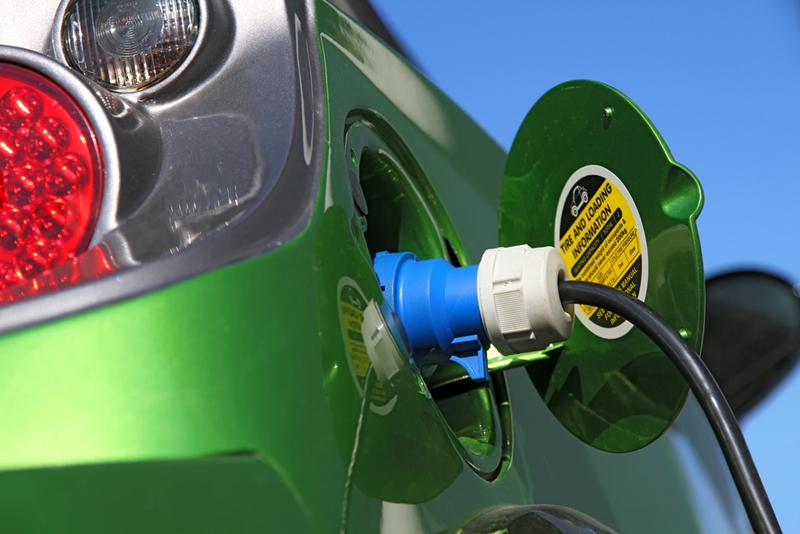
The vehicle identification number (VIN) is composed of 17 characters (digits and capital letters) that act as a unique identifier for the vehicle. A VIN displays the car's unique features, specifications and manufacturer.
The VIN can be found in a couple of places including on the car's registration label (1), on the compliance plate in the engine bay (2) or on the passenger side windshield (3), or on one of the door posts (where the door latches when it is closed) (4). See the image below:
Love the feeling of driving from a high seat position, like in an SUV? It makes you feel safe and secure, which is particularly ideal if you have kids in the car. However, the cost of fuel can put people off owning bigger, heavier cars that guzzle the gas. SUVs used to fall into that category, but drastic changes have been made recently. Whether you're buying a more recent model or one from 10 years ago, you'll want to make sure it has been taken care of - you can do that with a CarHistory report.
It's possible for you to buy an SUV that has a hybrid engine (one that uses both electric and fuel power). You might think this takes away from the power the engine produces, which can reduce capabilities off-road - but that's not always the case.
The fuel-powered part of the engine, when idling, does not have access to any torque.
The electric part of the engine uses a battery to run, and this always has access to 100 per cent of the torque1. The fuel-powered part of the engine, when idling, does not have access to any torque1, so when you put your foot down in a hybrid, the electric engine will make you shoot off the line. After you've reached speed, the fuel engine kicks in and charges the battery, so you don't run out of charge1.
Why is this an advantage in an SUV?
An SUV is a heavy vehicle - they tend to require more fuel to get off the line because you're shifting more weight. If you had a battery expending energy to get from 0-50 kph, then the fuel kicked in to keep the car at speed, you wouldn't use fuel during the least efficient part of the process. When travelling at speed, it doesn't take a lot of fuel to keep the car moving - the momentum is sufficient, making the car fuel-efficient.
When you brake, the excess power coming from the engine is directed toward the battery cell, which is charging1. You'd then accelerate to get to speed again, with no momentum (because you've stopped moving entirely) and the battery would take over, not using any fuel.

How much of a difference to fuel efficiency does that make?
Take the Mitsubishi Outlander PHEV - the latest model uses only 1.9 litres of fuel per 100 kilometres2. That's staggering, considering the Outlander is a large car. The 2009 Mitsubishi Outlander, by contrast, uses 9.5 litres per 100 kilometres3.
The Mitsubishi Outlander PHEV uses only 1.9 litres of fuel per 100 kilometres.
The Lexus RX 350 tells a similar story, although the improvement is less drastic because the hybrid engine is different. The most recent RX 350 uses 9.6 litres of fuel per 100 kilometres4, and the 2009 model uses 10.8 litres per 100 kilometres5.
In the comparison, a saving of 1.2 litres of fuel per 100 kilometres in the Lexus RX 350 doesn't seem like much, but over a distance of 100,000 kilometres, the cost of fuel is noticeable. The Mitsubishi is more impressive with a saving of 7.6 litres of fuel per 100 kilometres - and it didn't start out as a petrol-guzzling giant either!
If you want a car that doesn't use lots of fuel to go short distances, or that only produces minimal greenhouse gases, but still has all the advantages of an SUV, there are choices on the market for you. It might take a little bit of research to find a hybrid SUV that has been looked after properly, but you'll find one, and the savings you make on fuel expenditure will be significant.
For information about any of the cars you're looking to buy, make sure you get in touch with CarHistory today.
1. Union of Concerned Scientists. How do hybrid cars and trucks work? Accessed January 2017.
2. Mitsubishi. Outlander PHEV. Accessed January 2017.
3. CarsGuide. Mitsubishi Outlander used review - 2009-2009. Accessed January 2017.
4. Lexus. RX 350 Tech Data. Accessed January 2017.
5. CarAdvice. 2009 Lexus RX 350 Review & Road Test. Accessed January 2017.